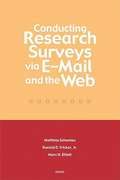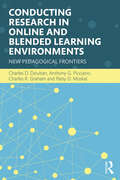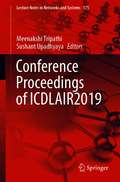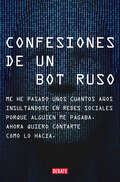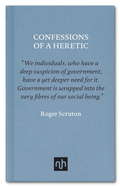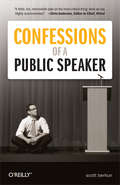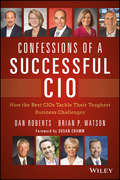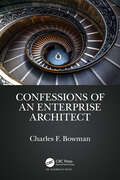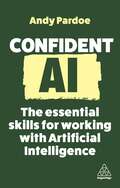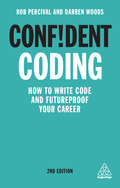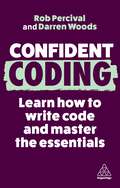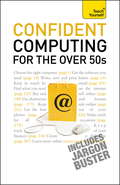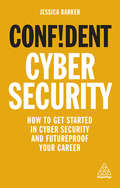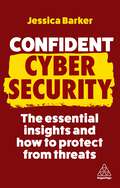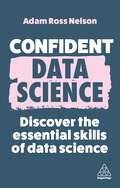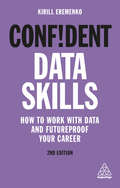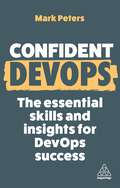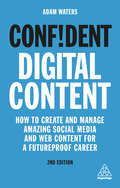- Table View
- List View
Conducting Research Surveys via E-mail and the Web
by Marc N. Elliott Matthias Schonlau Ronald D. FrickerInternet-based surveys, although still in their infancy, are becoming increasingly popular because they are believed to be faster, better, cheaper, and easier to conduct than surveys using more traditional telephone or mail methods. Based on evidence in the literature and real-life case studies, this book examines the validity of those claims. The authorsd iscuss the advantages and disadvantages of using e-mail and the Web to conduct research surveys, and also offer practical suggestions for designing and implementing Internet surveys most effectively. Among other findings, the authors determined that Internet surveys may be preferable to mail or telephone surveys when a list of e-mail addresses for the target population is available, thus eliminating the need for mail or phone invitations to potential respondents. Internet surveys also are well-suited for larger survey efforts and for some target populations that are difficult to reach by traditional survey methods. Web surveys are conducted more quickly than mail or phone surveys when respondents are contacted initially by e-mail, as is often the case when a representative panel of respondents has been assembled in advance. And, although surveys incur virtually no coding or data-entry costs because the data are captured electronically, the labor costs for design and programming can be high.
Conducting Research in Online and Blended Learning Environments: New Pedagogical Frontiers
by Charles R. Graham Anthony G. Picciano Charles D. Dziuban Patsy D. MoskalConducting Research in Online and Blended Learning Environments examines various perspectives, issues, and methods for conducting research in online and blended learning environments. The book provides in-depth examinations of the perspectives and issues that anyone considering research in online or blended learning will find insightful as they plan their own inquiries. Grounded in educational research theory, this is invaluable to both the serious researcher as well as the occasional evaluator. Conducting Research in Online and Blended Learning Environments provides comprehensive, useful information on research paradigms, methodologies, and methods that should be considered in designing and conducting studies in this area. Examples of the most respected research in the field enhance each chapter’s presentation.
Conference Proceedings of ICDLAIR2019 (Lecture Notes in Networks and Systems #175)
by Meenakshi Tripathi Sushant UpadhyayaThis proceedings book includes the results from the International Conference on Deep Learning, Artificial Intelligence and Robotics, held in Malaviya National Institute of Technology, Jawahar Lal Nehru Marg, Malaviya Nagar, Jaipur, Rajasthan, 302017. The scope of this conference includes all subareas of AI, with broad coverage of traditional topics like robotics, statistical learning and deep learning techniques. However, the organizing committee expressly encouraged work on the applications of DL and AI in the important fields of computer/electronics/electrical/mechanical/chemical/textile engineering, health care and agriculture, business and social media and other relevant domains. The conference welcomed papers on the following (but not limited to) research topics: · Deep Learning: Applications of deep learning in various engineering streams, neural information processing systems, training schemes, GPU computation and paradigms, human–computer interaction, genetic algorithm, reinforcement learning, natural language processing, social computing, user customization, embedded computation, automotive design and bioinformatics · Artificial Intelligence: Automatic control, natural language processing, data mining and machine learning tools, fuzzy logic, heuristic optimization techniques (membrane-based separation, wastewater treatment, process control, etc.) and soft computing · Robotics: Automation and advanced control-based applications in engineering, neural networks on low powered devices, human–robot interaction and communication, cognitive, developmental and evolutionary robotics, fault diagnosis, virtual reality, space and underwater robotics, simulation and modelling, bio-inspired robotics, cable robots, cognitive robotics, collaborative robotics, collective and social robots and humanoid robots It was a collaborative platform for academic experts, researchers and corporate professionals for interacting their research in various domain of engineering like robotics, data acquisition, human–computer interaction, genetic algorithm, sentiment analysis as well as usage of AI and advanced computation in various industrial challenges based applications such as user customization, augmented reality, voice assistants, reactor design, product formulation/synthesis, embedded system design, membrane-based separation for protecting environment along with wastewater treatment, rheological properties estimation for Newtonian and non-Newtonian fluids used in micro-processing industries and fault detection.
Confesiones de un bot ruso: Me he pasado bastantes años insultándote en redes sociales porque alguien me pagaba. Ahora que ya no estoy en nómina, quiero contarte cómo lo hacía.
by Bot RusoLOS SECRETOS QUE PARTIDOS POLÍTICOS, MULTINACIONALES Y ORGANIZACIONES MUNDIALES NO QUIEREN QUE CONOZCAMOS CONTADOS DESDE DENTRO. ME HE PASADO BASTANTE AÑOS INSULTÁNDOTE EN REDES SOCIALES PORQUE ALGUIEN ME PAGABA. AHORA QUE YA NO ESTOY EN NÓMINA, QUIERO CONTARTE CÓMO LO HACÍA. Bot Ruso pasó los últimos años de su trayectoria profesional al servicio de una agencia dedicada al astroturfing, con un equipo de trols a su cargo y operando en distintas misiones cuyo objetivo era manipular la conversación en la red. Ahora que ya no trabaja allí, se ha decidido a contar detalles sobre cómo se preparan y funcionan hoy las célebres campañas de bots y trols para empresas, partidos políticos o clubes deportivos. Con un enfoque divertido, irónico y muy didáctico, este libro nos abre los ojos y nos da las herramientas para reconocer este tipo de prácticas, evitar caer en la red de bulos y desenmascarar el modus operandi de los que mueven este negocio oscuro y poco ético.
Confessions of a Compact Camera Shooter
by Rick SammonTop photographer and Canon Explorer of Light Rick Sammon shares his best tips and tricks for getting high-quality images with your point-and-shoot cameraProlific author and renowned photographer Rick Sammon shares essential tips, tricks, and advice from years of vast and unique photography experiences. Packed with pointers and helpful hints, this handy, full-color guide can travel with you on your journeys for getting stunning photographs taken with point-and-shoot cameras. You'll learn how to capture proper exposure, create depth of field, use the appropriate flash settings, and much more.More than 100 techniques show you how to improve your compact camera skills and hundreds of lavish photos serve to motivate and inspire you. Aim your sights at taking stunning photos with this helpful guide by your side!Top industry expert, Canon Explorer of Light, and bestselling author Rick Sammon shares invaluable advice for taking amazing photos with a point-and-shoot cameraExplains how to capture proper exposure, create depth of field, use the appropriate flash settings, and more, all using your point-and-shoot cameraBoasts hundreds of beautiful photos with accompanying explanations as to the various techniques Sammon used to get a specific shotMotivates and inspires you to improve your compact camera skills to a whole new leveYou'll be grateful for the amazing advice Rick Sammon confesses in Confessions of a Compact Camera Shooter.
Confessions of a Heretic, Revised Edition: Selected Essays
by Roger ScrutonA revised edition of the Notting Hill Editions essay collection by the late Sir Roger Scruton with a new introduction by Douglas Murray.Confessions of a Heretic is a collection of provocative essays by the influential social commentator and polemicist Roger Scruton. Each &“confession&” reveals aspects of the author&’s thinking that his critics would probably have advised him to keep to himself. In this selection, covering subjects from art and architecture to politics and nature conservation, Scruton challenges popular opinion on key aspects of our culture: What can we do to protect Western values against Islamist extremism? How can we nurture real friendship through social media? Why is the nation-state worth preserving? How should we achieve a timely death against the advances of modern medicine? This provocative collection seeks to answer the most pressing problems of our age.In his introduction, the bestselling author and commentator Douglas Murray writes of what it cost Scruton to express views considered unpalatable, and of the importance of these ideas after Scruton&’s death.
Confessions of a Heretic: Selected Essays
by Roger ScrutonHard-hitting essays by acclaimed social commentator and philosopher Roger Scruton, guaranteed to provoke lively debateA wide-ranging selection that includes essays on architecture and modern art, the environment, politics, and culture.Each “confession” reveals aspects of the author’s thinking that his critics would probably have advised him to keep to himself. Roger Scruton challenges popular opinion on key aspects of our society: What can we do to protect Western values against Islamic extremism? How can we nurture real friendship in the digital age of social media and Facebook? How should we achieve a timely death against the advances of modern medicine? How should environmental policies be shaped by the government? This provocative collection seeks to answer the most pressing problems of our age.
Confessions of a Public Speaker
by Scott BerkunIn this hilarious and highly practical book, author and professional speaker Scott Berkun reveals the techniques behind what great communicators do, and shows how anyone can learn to use them well. For managers and teachers -- and anyone else who talks and expects someone to listen -- Confessions of a Public Speaker provides an insider's perspective on how to effectively present ideas to anyone. It's a unique, entertaining, and instructional romp through the embarrassments and triumphs Scott has experienced over 15 years of speaking to crowds of all sizes.With lively lessons and surprising confessions, you'll get new insights into the art of persuasion -- as well as teaching, learning, and performance -- directly from a master of the trade.Highlights include:Berkun's hard-won and simple philosophy, culled from years of lectures, teaching courses, and hours of appearances on NPR, MSNBC, and CNBCPractical advice, including how to work a tough room, the science of not boring people, how to survive the attack of the butterflies, and what to do when things go wrongThe inside scoop on who earns $30,000 for a one-hour lecture and whyThe worst -- and funniest -- disaster stories you've ever heard (plus countermoves you can use)Filled with humorous and illuminating stories of thrilling performances and real-life disasters, Confessions of a Public Speaker is inspirational, devastatingly honest, and a blast to read.
Confessions of a Successful CIO
by Dan Roberts Brian Watson Susan CrammBe the most effective CIO you can be--by learning from the best in the businessToday's Chief Information Officers must be an entirely new breed of technology leader. With ever-changing demands from the business, and in an increasingly technology-centric business environment, CIOs must find game-changing innovations and process improvements that make a real impact on the bottom line. Business executives need their CIOs to be real partners--speaking the language of the business and donning their strategist caps--not just commodity managers. Those IT leaders who fail to break out of the order-taker, utility manager mold will, simply put, be looking for a new job.In Confessions of a Successful CIO: How the Best CIOs Tackle Their Toughest Business Challenges, current and future CIOs will gain invaluable perspectives from the stories of today's best IT leaders. These acclaimed leaders--each profiled in their own chapter--explain the toughest business decision they had to make, and how the outcome influenced and impacted their leadership style. These in-depth anecdotes take the reader inside some of the most challenging business climates imaginable and chronicle how these elite CIOs made the decisions that mattered.Read detailed case studies of how some of the best CIOs have handled their most challenging business problemsLearn how the best CIOs anticipate changes to their business and respond--before the business comes knockingExplore how these top-flight CIOs make critical decisions around strategy and IT to not only benefit their companies, but in some cases, to save them from becoming obsolete.Analyze their perspectives on managing people, crises and balancing the risks and rewards of their "bet the farm" strategiesConfessions of a Successful CIO is the new playbook for learning how to take risks, respond to crises, and create more value from IT. Each chapter presents a different challenge, giving present-day and future IT leaders the chance to examine, analyze and learn so that they can be just as successful as the CIOs they're reading about.
Confessions of an AI Brain
by Paul Pettersson Elena Fersman Athanasios KarapantelakisHave you thought of how it feels to be an AI brain in the world of humans? This book allows such a brain to tell us how it takes on its mission of helping humans to develop a more efficient, sustainable, diverse and inclusive society.This book explains the principles and applications of artificial intelligence for a broad audience. Artificial intelligence, as part of computer science, is often inspired by human intelligence. At the same time, there is still reluctance in the applications and usability of artificial intelligence among citizens. Industries are deploying AI in their products and processes but the level of maturity is varying. The book is written as a first person narrative, from an AI perspective, having the AI brain tell the story.
Confessions of an Enterprise Architect
by Charles F. BowmanThe book goes a long way toward raising the profile of the invaluable role enterprise architects play in major software initiatives. For this reason, I have confidence that if organizations take these insights to heart and leverage them effectively, they will begin to deliver consistent, real returns on their IT investments. Will this book make a difference? Time will tell, but my sense is that it very well can.—William M. Ulrich, President at Tactical Strategy Group, Inc. Confessions of an Enterprise Architect is the insider’s track on how to succeed as an enterprise architect despite the politics, budgets, setbacks, personnel issues, and technological challenges. It includes theoretical and pragmatic discussions about the discipline, imparts constructive recommendations born of personal experience, and presents a set of best practices for developing professional-caliber architectures that deliver professional-caliber systems. The book also features numerous ‘confessions,’ which are practical tips, warnings, and guidance from a practicing enterprise architect garnered over a career of independent practice. A sample of confessions includes: Accommodating change is the sole constant in the professional life of an Enterprise Architect. Many Enterprise Architects don’t appreciate that their decisions not only affect system design but also impact the development environment and influence the structure of project teams. In many cases, initial project estimates are so inaccurate that approvers would be better off developing their own assessments. In many project teams, the user is the last consideration. The insights contained in this book, typified by its "Confessions" and "Pro Tips," offer organizations a way forward with enterprise architecture. This book also explains how enterprise architects can engage senior business leaders as effectively and as fluently as engaging business analysts, developers, business professionals, program managers, and fellow architects. In addition, it demonstrates how to communicate sophisticated, leading-edge concepts in clean, simple ways that facilitate buy-in at every level. Most importantly, the book makes the case that a professional enterprise architect—and, by extension, a professional-caliber enterprise architecture—sets the foundation for continued success in an industry accustomed to failure.
Confident AI: The Essential Skills for Working With Artificial Intelligence (Confident Series #16)
by Andy PardoeDiscover new skills, expand your knowledge and build your confidence through this fascinating and accessible guide to working with AI.Artificial intelligence has become an integral part of our everyday lives. But it remains an elusive, complex and intimidating technology that has hundreds of iterations and nuances. With Confident AI, build your confidence when working with AI by learning the fundamentals and discovering the intricacies of the industry.Andy Pardoe has spent decades working with AI, not only as an influential academic but also within corporations and as a consultant and accelerator for AI start-ups. He draws upon his expertise and lived experience to offer the essential skills and tools that you need to succeed with Artificial Intelligence, whether you are pursuing it as a career or simply working with AI in your work-life.About the Confident series...From coding and data science to cloud and cybersecurity, the Confident books are perfect for building your technical knowledge and enhancing your professional career.
Confident Cloud: Uncover the Essentials of Cloud Computing (Confident Series #17)
by Adora Nwodo94% of all enterprises depend upon cloud services. Gain the edge in your career with this essential guide to the fundamental concepts and platforms of cloud computing.Cloud computing is part of our everyday lives, from cloud backups of personal data to cloud platforms powering businesses around the world. But do you really understand how cloud computing works? This comprehensive guide demystifies key concepts and gives you the confidence you need to succeed in this sector.Confident Cloud includes key concepts from FinOps and DevOps to Kubernets and automation. This is supported by practical guidance on working in the industry, alongside a variety of fascinating case studies, clarifying how cloud infrastructure is effectively deployed and maintained.About the Confident series...From coding and data science to cloud and cybersecurity, the Confident books are perfect for building your technical knowledge and enhancing your professional career.
Confident Coding: How to Write Code and Futureproof Your Career (Confident Series)
by Rob Percival Darren WoodsBRONZE RUNNER UP: Axiom Awards 2018 - Business Technology Category (1st edition)Coding is one of the most in-demand skills in the job market. Whether you're an entrepreneur, a recent graduate or a professional, you can supercharge your career simply by grasping the fundamentals, and Confident Coding is here to help.This new and improved second edition of the award-winning book gives you a step-by-step learning guide to HTML, CSS, JavaScript, Python, building iPhone and Android apps and debugging. For entrepreneurs, being able to create your own website or app can grant you valuable freedom and revolutionize your business. For aspiring developers, this book will give you the building blocks to embark on your career path. For working professionals, coding skills can add a valuable edge to your CV. Whatever your professional profile, if you want to master the fundamentals of coding and kick start your career, Confident Coding is the book for you.About the Confident series...From coding and web design to data, digital content and cyber security, the Confident books are the perfect beginner's resource for enhancing your professional life, whatever your career path.
Confident Coding: Learn How to Code and Master the Essentials (Confident Series #13)
by Rob Percival Darren WoodsCoding is one of the most in-demand skills in the job market. Whether you're a recent graduate or a professional, Confident Coding offers the career insights and technical knowledge you need for success.A unique combination of technical insights and fascinating career guidance, this book highlights the importance of coding, whatever your professional profile. For entrepreneurs, being able to create your own website or app can grant you valuable freedom and revolutionize your business. For aspiring developers, this book will give you the building blocks to embark on your career path.This new and improved third edition of the award-winning book gives you a step-by-step learning guide to HTML, CSS, JavaScript, Python, building iPhone and Android apps and debugging. Confident Coding is the essential guide to mastering the fundamentals of coding.About the Confident series...From coding and data science to cloud and cyber security, the Confident books are perfect for building your technical knowledge and enhancing your professional career.
Confident Coding: Master the Fundamentals of Code and Supercharge Your Career
by Rob PercivalIf you want to master the fundamentals of coding and kick start your career, Confident Coding is the book for you. Everyone has a digital life, but too few truly understand how the software that dominates the world actually works. Coding is one of the most in demand skills on the job market and grasping the basics can advance your creative potential and make you stand out from the crowd. Rob Percival gives you a step-by-step learning guide to HTML, CSS, JavaScript, Python, building iPhone apps, building Android apps and debugging. On reading this book and honing your skills through practice, you will be able to code in each of these languages, build your own website, build your own app and have the confidence to supercharge your employability. Confident Coding provides you with the roadmap you need to enhance your professional life through coding, with insightful and inspirational guidance, including real life success stories, on how to use your new skills. The ability to code can give your CV the edge on the competition, give you greater autonomy and improve your work performance. If you are a self-employed entrepreneur, being able to create your own website or app can grant you valuable freedom and revolutionize your business. If you are an aspiring developer, this book will give you the building blocks to embark on this career path.
Confident Computing for the Over 50s: A non-technical practical guide for the late, absolute beginner
by Bob ReevesDo you feel that you have been left behind in the technological revolution? Assuming no prior knowledge of using a computer, this book is written in a practical, light-hearted and non-technical style to take the terror out of the technology.Bob Reeves approaches the subject in a highly accessible way, focusing on the computer applications of most interest to middle and third agers, including correspondence, photography, shopping online, personal budgets and researching your family history. It begins with the very basics and ends with an invaluable 'jargonbuster' glossary.The book is made up of a series of self-contained chapters, with the emphasis on what the computer is being used for, rather than the software needed. For example: rather than a chapter on 'word-processing', there is a chapter on 'letter writing'; rather than 'desktop publishing' there is 'making a newsletter' and 'making cards for all occasions'; rather than one on 'digital photography' there is ' getting photographs on to the computer' etc. There will be clear instructions supported with screenshots, tips and hints throughout.This approach sets it apart from other books on basic computer skills as it covers what you really want to do with your computer, breaking down any technical barriers and making the book totally relevant to the novice computer user.NOT GOT MUCH TIME?One, five and ten-minute introductions to key principles to get you started.AUTHOR INSIGHTSLots of instant help with common problems and quick tips for success, based on the author's many years of experience.TEST YOURSELFTests in the book and online to keep track of your progress.EXTEND YOUR KNOWLEDGEExtra online articles at www.teachyourself.com to give you a richer understanding of computing.FIVE THINGS TO REMEMBERQuick refreshers to help you remember the key facts.TRY THISInnovative exercises illustrate what you've learnt and how to use it.
Confident Computing for the Over 50s: A non-technical practical guide for the late, absolute beginner (TY Computing)
by Bob ReevesDo you feel that you have been left behind in the technological revolution? Assuming no prior knowledge of using a computer, this book is written in a practical, light-hearted and non-technical style to take the terror out of the technology.Bob Reeves approaches the subject in a highly accessible way, focusing on the computer applications of most interest to middle and third agers, including correspondence, photography, shopping online, personal budgets and researching your family history. It begins with the very basics and ends with an invaluable 'jargonbuster' glossary.The book is made up of a series of self-contained chapters, with the emphasis on what the computer is being used for, rather than the software needed. For example: rather than a chapter on 'word-processing', there is a chapter on 'letter writing'; rather than 'desktop publishing' there is 'making a newsletter' and 'making cards for all occasions'; rather than one on 'digital photography' there is ' getting photographs on to the computer' etc. There will be clear instructions supported with screenshots, tips and hints throughout.This approach sets it apart from other books on basic computer skills as it covers what you really want to do with your computer, breaking down any technical barriers and making the book totally relevant to the novice computer user.NOT GOT MUCH TIME?One, five and ten-minute introductions to key principles to get you started.AUTHOR INSIGHTSLots of instant help with common problems and quick tips for success, based on the author's many years of experience.TEST YOURSELFTests in the book and online to keep track of your progress.EXTEND YOUR KNOWLEDGEExtra online articles at www.teachyourself.com to give you a richer understanding of computing.FIVE THINGS TO REMEMBERQuick refreshers to help you remember the key facts.TRY THISInnovative exercises illustrate what you've learnt and how to use it.
Confident Cyber Security: How to Get Started in Cyber Security and Futureproof Your Career (Confident Series)
by Dr Jessica BarkerThe world is more digitally connected than ever before, and with this connectivity, comes vulnerability. It is therefore vital that all professionals understand cyber risk and how to minimize it. This means that cyber security skills are in huge demand, and there are vast career opportunities to be taken. Confident Cyber Security is here to help. This jargon-busting guide will give you a clear overview of the world of cyber security. Exploring everything from the human side to the technical and physical implications, this book takes you through the fundamentals: how to keep secrets safe, how to stop people being manipulated and how to protect people, businesses and countries from those who wish to do harm.Featuring real-world case studies from Disney, the NHS, Taylor Swift and Frank Abagnale, as well as social media influencers and the entertainment and other industries, this book is packed with clear explanations, sound advice and practical exercises to help you understand and apply the principles of cyber security. Let Confident Cyber Security give you that cutting-edge career boost you seek.About the Confident series...From coding and web design to data, digital content and cyber security, the Confident books are the perfect beginner's resource for enhancing your professional life, whatever your career path.
Confident Cyber Security: The Essential Insights and How to Protect from Threats (Confident Series #11)
by Dr Jessica BarkerThe world is more digitally connected than ever before and, with this connectivity, comes vulnerability. This book will equip you with all the skills and insights you need to understand cyber security and kickstart a prosperous career. Confident Cyber Security is here to help. From the human side to the technical and physical implications, this book takes you through the fundamentals: how to keep secrets safe, how to stop people being manipulated and how to protect people, businesses and countries from those who wish to do harm. Featuring real-world case studies including Disney, the NHS, Taylor Swift and Frank Abagnale, this book is packed with clear explanations, sound advice and practical exercises to help you understand and apply the principles of cyber security. This new edition covers increasingly important topics such as deepfakes, AI and blockchain technology.About the Confident series...From coding and data science to cloud and cyber security, the Confident books are perfect for building your technical knowledge and enhancing your professional career.
Confident Data Science: Discover the Essential Skills of Data Science (Confident Series #15)
by Adam Ross NelsonThe global data market is estimated to be worth $64 billion dollars, making it a more valuable resource than oil. But data is useless without the analysis, interpretation and innovations of data scientists. With Confident Data Science, learn the essential skills and build your confidence in this sector through key insights and practical tools for success. In this book, you will discover all of the skills you need to understand this discipline, from primers on the key analytic and visualization tools to tips for pitching to and working with clients. Adam Ross Nelson draws upon his expertise as a data science consultant and, as someone who made moved into the industry late in his career, to provide an overview of data science, including its key concepts, its history and the knowledge required to become a successful data scientist. Whether you are considering a career in this industry or simply looking to expand your knowledge, Confident Data Science is the essential guide to the world of data science.About the Confident series...From coding and data science to cloud and cyber security, the Confident books are perfect for building your technical knowledge and enhancing your professional career.
Confident Data Skills: How to Work with Data and Futureproof Your Career (Confident Series)
by Kirill EremenkoData has dramatically changed how our world works. Understanding and using data is now one of the most transferable and desirable skills. Whether you're an entrepreneur wanting to boost your business, a jobseeker looking for that employable edge, or simply hoping to make the most of your current career, Confident Data Skills is here to help.This updated second edition takes you through the basics of data: from data mining and preparing and analysing your data, to visualizing and communicating your insights. It now contains exciting new content on neural networks and deep learning. Featuring in-depth international case studies from companies including Amazon, LinkedIn and Mike's Hard Lemonade Co, as well as easy-to understand language and inspiring advice and guidance, Confident Data Skills will help you use your new-found data skills to give your career that cutting-edge boost.About the Confident series...From coding and web design to data, digital content and cyber security, the Confident books are the perfect beginner's resource for enhancing your professional life, whatever your career path.
Confident Data Skills: Master the Fundamentals of Working with Data and Supercharge Your Career (Confident Series)
by Kirill Eremenko<p>Data science is the most exciting skill you can master. Data has dramatically changed how our world works. From entertainment to politics, from technology to advertising and from science to the business world, data is integral and its only limit is our imagination. If you want to have a vibrant and valuable professional life, being skilled with data is the key to a cutting-edge career. Learning how to work with data may seem intimidating or difficult but with <i>Confident Data Skills</i> you will be able to master the fundamentals and supercharge your professional abilities. This essential book covers data mining, preparing data, analysing data, communicating data, financial modelling, visualizing insights and presenting data through film making and dynamic simulations. <p>In-depth international case studies from a wide range of organizations, including Netflix, LinkedIn, Goodreads, Deep Blue, Alpha Go and Mike's Hard Lemonade Co. show successful data techniques in practice and inspire you to turn knowledge into innovation. <i>Confident Data Skills</i> also provides insightful guidance on how you can use data skills to enhance your employability and improve how your industry or company works through your data skills. Expert author and instructor, Kirill Eremenko, is committed to making the complex simple and inspiring you to have the confidence to develop an understanding, adeptness and love of data.</p>
Confident DevOps: The Essential Skills and Insights for DevOps Success (Confident Series #18)
by Mark PetersThe global DevOps market is valued at over $8 billion. But this vital sector remains complex and intimidating for many. Unlock your full potential and uncover the key insights with Confident DevOps. DevOps is defined by the practices, methodologies and tools which are necessary for any software development endeavour to succeed. It is a unique and fascinating discipline, which requires technical expertise, managerial skills and strong communication skills.Confident DevOps guides you through the entire software development lifecycle. offering insights on key topics including system architecture and cyber security. With fascinating insights on the various career paths and opportunities, this book offers the practical skills, knowledge and confidence you need to develop your DevOps expertise and pursue a successful career.About the Confident series...From coding and data science to cloud and cyber security, the Confident books are perfect for building your technical knowledge and enhancing your professional career.
Confident Digital Content: How to Create and Manage Amazing Social Media and Web Content for a Futureproof Career (Confident Series)
by Adam WatersAre you considering a career in social media? Are you an entrepreneur or freelancer looking to boost your online content marketing? Maybe you're looking for your next career pivot, or you're simply seeking skills to give your CV that competitive edge? Wherever you are in your career, Confident Digital Content can help. Covering the essentials of online content, this book takes you through everything you need to know - from how to write effectively for online platforms, through to video, audio, graphic design and photography. Featuring inspiring case studies from individuals at companies including CNN International, Mumsnet, Bunster's Hot Sauce and HuffPost UK, this practical beginner's guide includes guidance on content marketing strategy, metrics and community management.This updated second edition features advice on the latest trends, including fake news, the importance of stories and social listening analysis. Though trends, fads and hashtags change, the principles of great online content remain the same - let Confident Digital Content give you the grounding you need to ace your social channels and supercharge your career.About the Confident series...From coding and web design to data, digital content and cyber security, the Confident books are the perfect beginner's resource for enhancing your professional life, whatever your career path.
